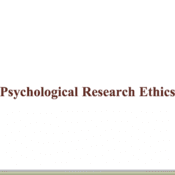How Often Are Animals Used In Psychological Research?
Psychological research aims to empathize homo behavior and how the mind works. This involves studying non-homo animals for research through observation also as experiments.
Some of the experimental procedures involve electric shocks, drug injections, food deprivation, maternal separation, and manipulating brain functions to determine the furnishings on sensory and cognitive abilities as well as behavior (Kimmel, 2007). Non-human primates, cats, dogs, rabbits, rats and other rodents are most commonly used in psychological experiments, though animals are besides used for teaching within psychology, as well as beliefs therapy for treating phobias.
In the past, there accept been a number of psychological experiments using animals to exam various hypotheses. Psychologist, Dr. Harlow (1965) experimented on monkeys to show effects of social isolation; Skinner (1947) worked with pigeons to report superstition, while Pavlov (1980) used dogs to investigate operant conditioning. Still, in that location is a lot of fence on the use of non-human animals in psychological research and many upstanding bug both in favor and against it.

http://www2.carleton.ca/psychology/ethics/
Limitations And Benefits Of Psychological Research On Animals:
Many people come across animal testing as a cruel and inhumane practice. They fence that all life is sacred and animals become through a lot of distress during experiments in which they involuntarily take part. The examination subjects are treated as objects rather than a living animate being and are frequently abused, neglected and kept in improper cages. Moreover, psychological research is done but out of marvel, with no purpose, justification, or likelihood of useful results (Whitford, 1995).
Each year 400 million animals are experimented on (U.Thousand. Abode office statistics, 2009) and the few breakthroughs that occur are often at the expense of the animals. In fact, Rollin (1981) chosen experimental psychology, the field most consistently guilty of mindless activity that results in great suffering.
A coalition of over 400 protectionist groups defendant psychologist of giving intense shocks to animals, mutilating their limbs, killing them through food or h2o deprivation and driving animals insane from total isolation (Mobilization for Animals, 1984).
Experiments are often carried out on animals that are not closely related to humans physically and this may produce inaccurate and over inflated results. The British Union for the Abolition of Vivisection (BUAV) argues that laboratory conditions may themselves undermine the results, because of the stress the surroundings produces on animals.

google images

However, the inability to produce accurate testing on anything but a living organism, makes it necessary for animals to be used for enquiry and in many cases, no reasonable alternative exists (Gallup & Suarez, 1985). Animals are good surrogates because of their similarities to humans, have shorter life and reproductive spans so that several generations can be studied in a curt fourth dimension, and can exist bred free from affliction peculiarly for testing purposes. (Psychology Wiki).
Also, animal research places humans in an evolutionary context and makes possible a comparative and biological perspective on homo beliefs. Psychologists realize that the brains of experimental animals are non miniature human brains simply only serve as a model for it, assuming that basic principles of brain organisation are common across mammalian species (Canadian Council on Animal Care, 1993)
Moreover, psychology is concerned with understanding and decision-making psychopathology, such every bit depression, phobias, psychosomatic disorders, learning disabilities, obesity and habit. Many of these issues cannot be studied satisfactorily in human patients because of the difficulty determining causal relationship between variables, and which leaves us merely with correlations.
Animals thus provide an alternative by allowing a command of hereditary and experimental variables not easily possible with human being beings. Since controlled experiments involve introducing one variable at a time, animals are easier to confine inside a laboratory, and one tin can have greater experimental command, active manipulation of variables and even exercise ethical discretion (Telner & Singhal, 1984).
Roll to Continue
Read More From Owlcation

google images
The accusation that behavioral research on animals has not resulted in any benefit to humans is not justified either since such inquiry has been responsible for major advances in human well being (Miller, 1985). Our insight into psychological disorders, wellness issues, addiction and effects of stress and feet have been a direct result of animal testing, helping to develop new drugs and treatments for illnesses.
Sperry'due south (1968) initial split up brain studies on animals atomic number 82 to better understanding of epilepsy, while electrodes placed within creature brains have helped to empathize biological ground of beliefs in human beings e.g. how pleasure is produced past stimulating certain areas of hypothalamus in the encephalon (Wood & Wood, 1999). Animal research has helped to empathise bones motivational processes similar hunger, thirst, reproduction equally well as vision, taste, hearing, perception and theories on the working of mind and torso. Information technology has helped develop techniques to recover lost function in partially paralyzed limbs and treat hypertension and headaches.
The principles of learning established with animals have been used to amend classroom educational activity and provide advanced treatments of bed-wetting, anorexia and scoliosis of the spine (Whitford, 1995). Research on early visual impecuniousness in animals has helped in the before detection and treatment of visual defects in human infants.

google images
Creature studies on dogs and chimpanzees have also given united states of america an insight into their own behavior, especially the presence of a theory of heed among animals (Povinelli and Boil, 1996; Köhler, 1925); Nevertheless, this too emphasizes the fact that animals are capable of feeling emotions and hurting which makes it unethical to put them through distress during experimentation.

google images
A survey of the articles in journals of American Psychological Clan, indicates that none of the most farthermost accusations against animal research are verified (Coile & Miller, 1984). It is seen that simply 10 percent of the studies used any electric daze, and just 3.9 percent used inescapable shock of greater than .001 ampere.
Likewise, lxxx percent of the studies using shock or impecuniousness were funded by respected organizations requiring thorough justification of all procedures, while experiments performed out of mere curiosity were not funded.
Thus, even though instances of cruelty may have occurred without being reported, no cases of abuse appeared in the major psychology journals. Abusive treatment of animals cannot thus exist considered a central characteristic of psychology (Coile & Miller, 1984).
Upstanding Guidelines For Psychological Inquiry:
It is important to notation that the use of animals in research is heavily controlled by the British Psychological Society (BPS) and it's Standing Advisory Committee on the Welfare of Animals in Psychology (SACWAP) by means of strict ethical guidelines to prevent cruelty and irresponsible treatment of animals.
These rules are enforced through inspections by federal and funding agencies and failure to abide by the guidelines constitutes a breach of the code of comport applicable to all chartered psychologists (Lea, 2000). Nearly countries have similar guidelines, and institutions and universities with ethics committees that evaluate all research proposals.
The Order endorses the principles of Replacement, Reduction and Refinement: i.e. animals should only be used when at that place are no alternatives to their use; number of animals used in procedures causing pain or distress reduced to minimum and the severity of such procedures minimized.
The Lodge in particular states that in all psychological use of animals, the benefits to humans should clearly outweigh the costs to the animals involved i.east. when reporting research in scientific journals or otherwise, researchers must be prepared to identify any costs to the animals involved and justify them in terms of the scientific benefit of the work. Alternatives, such as video records from previous work or reckoner simulations are highly encouraged (Smyth, 1978).

google images
Extreme intendance must be taken in the capture, care, housing, usage and disposition of the animal. Psychologists should choose a species that is scientifically and ethically suitable for the intended employ and is to the lowest degree probable to suffer while yet attaining the scientific objective.
Huntingford (1984) and Elwood (1991) suggest that wherever possible, field studies of natural encounters should be used in preference to staged encounters.
Investigators studying gratuitous-living animals should take precautions to minimize interference and disruption of eco-systems of which the animals are a role. Capture, mark, radio tagging and drove of physiological information may have long-term consequences, which should exist taken into business relationship.
Regular post-operative monitoring of the brute'due south condition is essential, and if at any time an animate being is found suffering severe hurting that cannot exist alleviated, it must exist killed as painlessly as possible using an approved technique. The aim is to foster an attitude of responsibility towards animals used in psychological procedures (British Psychological Society, 2000).

google images
Conclusion:
Both arguments against and for animate being testing have their ground. It seems unethical to use animals for experimentation only if we stopped completely there would be a large amount of human lives lost. Animal testing tin be seen equally a means to a greater ends; the question is which species (animals or human) seems expendable or is more upstanding to test on.
Also, and so much has been learned due to creature testing that the consequences of using them for experiments far out weighs the notion to stop using them. As Herzog (1988) states, the decisions concerning humanity'south moral obligations to other species are often inconsistent and casuistic i.e. killing lab animals is criticized, whereas killing mice every bit pests produces fiddling protestation.
Neither consummate prohibition of animate being testing nor complete license is the solution; what's needed instead is an informed, objective evaluation along with reasonable standards and the ways to enforce those standards (Whitford, 1995). Psychologist must exist sensitive to the upstanding issues surrounding their piece of work, question get-go whether each investigation necessitates use of animals and if so, proceed in ways that lead to humane handling of animals, avoiding invasive and painful procedures wherever possible. (Kimmel, 2007)
Source: https://owlcation.com/social-sciences/Psychology-Research-Psychological-Research-On-Animals
Posted by: oharafeelitere.blogspot.com

0 Response to "How Often Are Animals Used In Psychological Research?"
Post a Comment